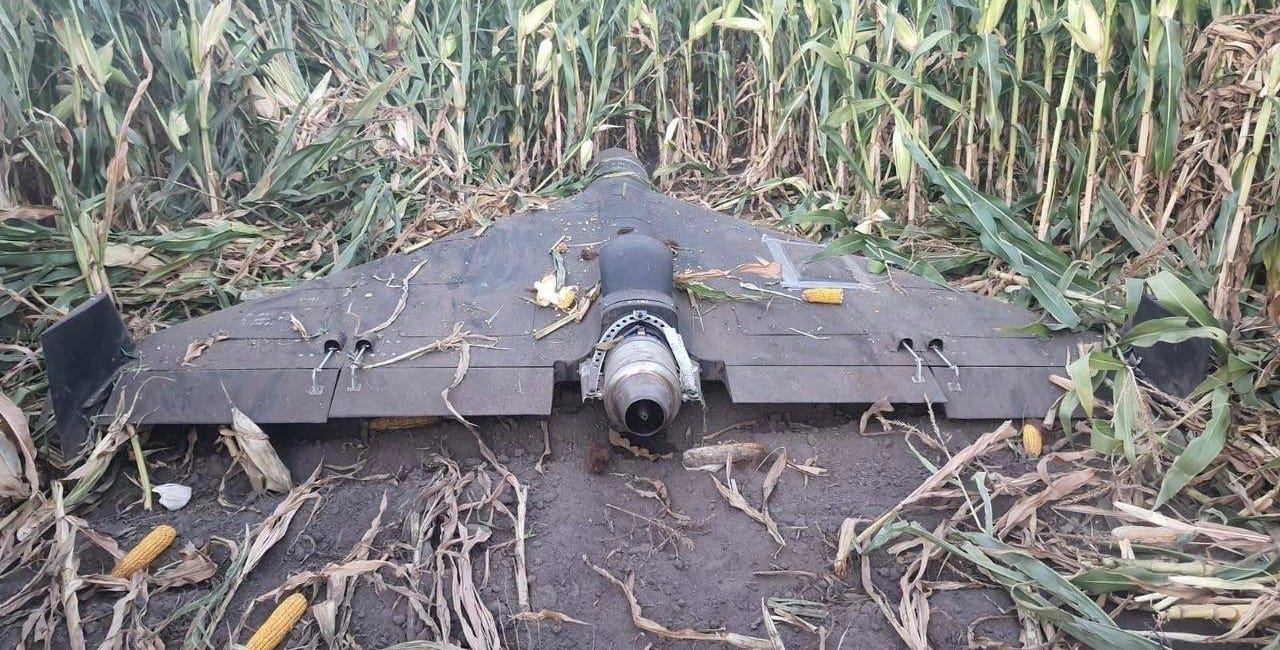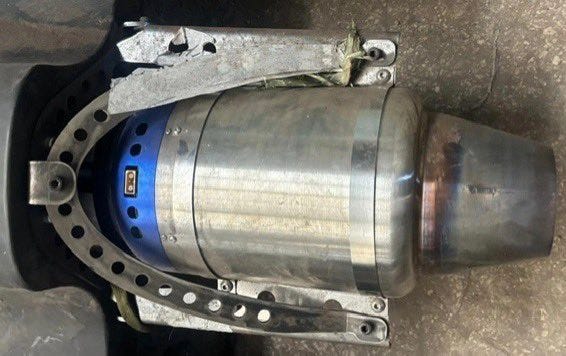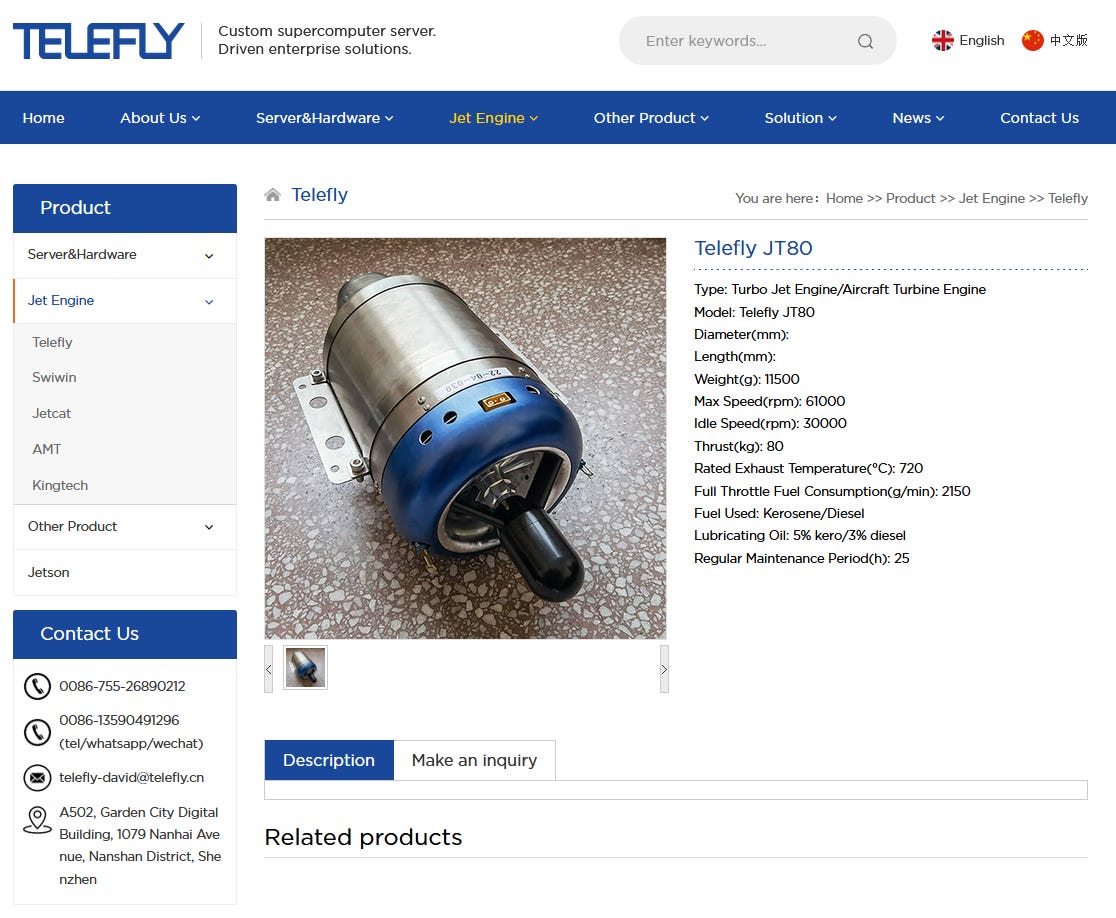Uncertainties Remain Amid Ukrainian Claims That Russia's Geran-3 Uses A Chinese Turbojet Engine
🇷🇺 🇺🇦
According to Ukrainian military intelligence, Russia’s Geran-3, which is a turbojet-powered derivative of the ordinarily propeller-driven Iranian-origin Shahed-136/Geran-2/Garpiya strike drone, is powered by a commercially-sourced Chinese Telefly JT80 turbojet engine. This post expands upon my recent post on the Geran-3 with a specific focus on its reported use of this Chinese turbojet engine.
Ukraine Lifts Veil On Russia's Turbojet-Powered Geran-3
Note: The following text was originally posted on my X/Twitter account.
According to its manufacturer, the JT80 turbojet generates a maximum thrust of 80 kilograms, which is to say around 785 newtons or 0.785 kilonewtons (kN). The JT80 is a commercial-off-the-shelf (COTS) turbojet engine. Small and fairly low-thrust turbojet engines such as the JT80 were—until recently—typically used on hobby aircraft and, at most, in target drones used to support military training activities. Until recently, there were very few military applications for small turbojet engines, which helps explain the commercial trade in such propulsion systems and the general absence of regulations and regulatory enforcement thus far. The JT80 falls on the higher thrust end of the COTS turbojet engine spectrum—there are many even smaller/lower thrust COTS turbojet engines available for purchase with few regulations worldwide. For context, (subsonic) anti-ship cruise missiles, which until recently constituted some of the smallest missiles equipped with air-breathing engines, are typically equipped with a turbojet generating 2.5-3.5 kN (i.e., 2500-3500 newtons).
While unit costs are ultimately determined by the number of turbojet engines included in an order, such a turbojet engine is typically sold on the commercial market at a unit price of US$15,000-$20,000. While the JT80 is a COTS design, it is designed to be reusable and is not a true bare-bones, no-frills turbojet engine designed to the lowest possible price point and, importantly, for one-time use. Stated differently, lower-cost turbojet engines of comparable thrust are possible. Russia’s gas turbine industry, however, appears to be incapable of quickly developing new turbojet designs and, more generally, appears to be similarly incapable of greatly expanding production output despite over three years of wartime industrial mobilization. It remains to be seen whether the JT80 is, in fact, being produced within Russia, possibly with some China-sourced components. Even if there is a licensed production agreement in place or supposing that Russia has independently reverse-engineered the Chinese JT80, the fact remains that the Geran-3 does not feature a Russian-designed turbojet engine, a dynamic that is a damning indictment of the state of Russia’s capacity to produce the many types of military equipment it needs for use in the Russia-Ukraine War and beyond.
It is worth noting that the JT80 is a fairly low-performance engine for use with the Geran-3 and the Shahed-136/Geran-2/Garpiya cropped delta wing airframe more generally. The maximum thrust of 785 newtons (0.785 kN) explains its fairly unimpressive reported top speed of around 300 kilometers per hour—the 370 kilometers per hour figure also offered by Ukrainian military intelligence may refer to the Geran-3’s top speed in a terminal dive toward the intended target. It is worth noting that the Chinese company Telefly offers a diverse array of turbojet engines. With the JT80’s name denoting 80 kilograms of thrust, Telefly also offers a JT40, JT100 and JT135, as well as turbojets generating 200 (~1960 newtons) and 400 kilograms (~3900 newtons) thrust. Supposing that Russia has secured a steady supply of JT80 turbojet engines, a dynamic that will likely result in burdensome sanctions on the part of European countries and perhaps the United States against the Chinese company, Russia may be able to not only asustain a sizable production run for the Geran-3 but also use commercially-sourced Chinese engine turbojet engines designs, if not commercially-sourced Chinese-built turbojet engines, in other strike munitions. It is worth noting that the S8000 Banderol, a fairly new Russian air-launched cruise missile, is reportedly equipped with a different Chinese turbojet engine of comparable performance, the Swiwin SW800Pro. Given uncertainties as to whether Russia is importing fully-assembled Chinese-built turbojet engines, it remains to be seen whether Russia is rather haphazardly employing whatever commercially-sourced turbojet engine is available on the Geran-3 or if the JT80 turbojet is the propulsion system used on all Geran-3 specimens.




